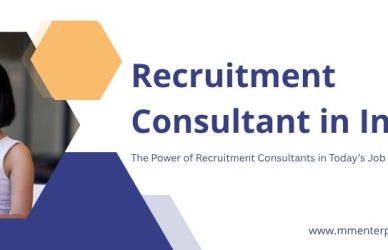Remote Hiring Through EOR & PEO Service Provider in India: Why Remote Hiring is No Longer Optional.
The rise of remote work is no longer just a reaction to global crises—it has become a permanent shift in how businesses operate. Companies across industries and geographies are embracing the remote-first or hybrid model, realizing that talent isn’t limited by borders. However, hiring talent globally comes with challenges: compliance, payroll, benefits, tax regulations, and more.
An EOR allows businesses to legally hire and onboard remote employees in other countries without the need to set up a local legal entity. With remote hiring through EOR, companies can access global talent while staying compliant with local employment laws.
This article is a detailed, human-centered guide to help you understand the process, benefits, and considerations of remote hiring through an EOR. Whether you’re a startup eyeing expansion or an enterprise scaling across continents, this step-by-step guide will show you how to do it right.

Step 1: Understanding What an EOR Does
Before you dive into remote hiring, it’s crucial to understand what an Employer of Record actually does. In simple terms, an EOR is a third-party service provider that legally employs your remote worker on your behalf in their country of residence.
Responsibilities of an EOR:
- Handles payroll and tax deductions
- Manages statutory benefits (e.g., health insurance, pensions)
- Ensures compliance with labor laws and regulations
- Drafts locally compliant employment contracts
- Onboards and offboards employees
- Manages terminations, disputes, and severance
You retain day-to-day management of the employee, including assigning tasks, performance reviews, and team integration, while the EOR handles everything legal and administrative.
An EOR acts as the bridge between you and your global workforce, making it an ideal partner for remote hiring.
Step 2: Identifying the Roles to Hire Remotely: A Strategic Approach
The rise of remote work has transformed the way organizations build teams. But global hiring, especially through an Employer of Record (EOR), should never be approached randomly. The success of remote hiring lies not in the ability to find someone across the globe, but in making deliberate, strategic decisions about which roles can be performed effectively and efficiently from a distance.
Remote work is not a one-size-fits-all model. While some functions thrive in asynchronous, distributed environments, others demand face-to-face collaboration, immediate availability, or physical presence. That’s why the first step in remote hiring should always be to identify which roles are suitable for remote execution.
Why Role Selection Matters in Remote Hiring
Before jumping into the global talent pool, organizations must evaluate how each role fits within a remote framework. Hiring someone halfway across the world might save money or unlock hard-to-find skills—but only if the nature of the work supports that structure.
Failing to consider role suitability can lead to:
- Communication gaps
- Project delays
- Cultural mismatches
- Frustrated managers and employees
An Employer of Record (EOR) can simplify global compliance and onboarding, but the core responsibility of role suitability lies with the organization.
Common Remote-Friendly Roles
Below are some of the most successful categories for remote hiring through EOR partnerships:
1. Software Developers and Engineers
Why it works:
Software development is project-based, requires minimal physical interaction, and relies heavily on digital tools like GitHub, Jira, and Slack. Developers often prefer flexible schedules and remote freedom to focus.
Example:
A U.S.-based fintech startup needed to scale fast but couldn’t afford San Francisco salaries. They partnered with an EOR service provider to hire React and Python developers from Eastern Europe. With proper sprint planning and code reviews, the offshore team delivered ahead of schedule.
2. Digital Marketing Specialists
Why it works:
Marketing roles like SEO strategists, performance marketers, and PPC specialists work independently, relying on tools like Google Analytics, SEMrush, HubSpot, and Trello to track and deliver results. These tasks don’t require real-time collaboration.
Example:
An eCommerce brand in Canada hired a remote digital marketing team from the Philippines via an EOR. This team handled email campaigns, Facebook ads, and blog content, contributing to a 35% revenue increase in one quarter—all while being managed virtually.
3. Designers and Content Creators
Why it works:
Designers and writers are creators by nature. They need creativity, not meetings. Tools like Canva, Figma, Adobe Suite, and Notion allow them to collaborate, share drafts, and receive feedback from anywhere in the world.
Example:
A UK-based SaaS company hired a UX/UI designer in India through an EOR. Weekly design reviews and Loom video walkthroughs enabled a seamless design process across time zones, resulting in a 20% improvement in user engagement.
4. Sales Representatives and Business Development Executives
Why it works:
Sales roles—especially outbound and business development—are target-driven. As long as the employee understands the product and market, they can execute strategies from any location.
Example:
A healthcare SaaS firm expanding into LATAM hired Spanish-speaking SDRs (Sales Development Representatives) through an EOR partner in Mexico. They generated regional leads and nurtured relationships while the core team remained in the U.S.
5. Customer Support Executives
Why it works:
It operates around shifts, scripts, and tickets—perfect for remote execution with minimal training. Tools like Zendesk, Freshdesk, and Intercom support global coordination.
Example:
An Australian edtech startup extended its support coverage to 24/7 by hiring agents in Kenya and the Philippines using an EOR. The company boosted its Trustpilot ratings due to faster resolution and continuous service.
Questions to Ask Before Assigning a Role for Remote Hiring
Not all roles—even in the same department—are created equal. Before moving forward with global hiring, it’s crucial to evaluate each role independently. Here are key questions to guide the decision:
1. Can This Role Be Managed Effectively Across Time Zones?
- Does the role require real-time collaboration with other team members?
- Can the employee work independently with asynchronous communication?
- Are there any legal or regulatory constraints (e.g., for compliance officers or legal roles)?
Example Insight:
While a data analyst can work asynchronously and deliver reports, a scrum master coordinating daily stand-ups across three time zones may struggle without overlapping work hours.
2. Do We Have the Tools and Processes for Remote Collaboration?
- Are you using project management tools like Asana, ClickUp, or Basecamp?
- Can you track progress and communicate without being in the same room?
- Is your onboarding process remote-ready?
Example Insight:
Hiring a video editor remotely is efficient only if the company uses cloud storage (e.g., Google Drive, Dropbox) and clear version control. Without these, file management becomes chaotic.
3. Are We Ready to Manage Performance and Communication Virtually?
- Are managers trained in virtual leadership and feedback?
- Do you have regular check-ins, 1:1s, and KPIs set?
- Are you equipped to build team culture without a physical office?
Example Insight:
A company that fails to communicate regularly with a remote hire risks disengagement. Hiring a project coordinator remotely without defined SOPs or status meetings may result in missed deadlines.
Roles to Be Cautious About for Remote Hiring.
Some roles are better suited for in-office or hybrid settings, depending on organizational maturity:
- Operations and Logistics Managers – may need on-ground oversight.
- Facility Management or IT Support – require physical presence for equipment handling.
- Creative Directors or Product Managers – need face-to-face whiteboarding sessions in early-stage startups.
- HR Generalists or Office Admins – often require interaction with in-office teams.
These roles may still be hired remotely, but only if the organization has invested heavily in virtual infrastructure and culture.
When to Use an EOR for Remote Role Hiring
Once a role is deemed suitable for remote execution, an Employer of Record (EOR) becomes the fastest and most compliant way to hire internationally. An EOR takes care of:
- Drafting compliant local employment contracts.
- Managing local payroll and taxes.
- Administering benefits and statutory contributions.
- Ensuring legal protection for both employer and employee.
Example:
A U.S.-based cybersecurity firm identified a need for a Japanese-speaking threat analyst. Instead of opening a Japan office, they used an EOR to onboard the candidate in Tokyo, ensuring compliance with Japanese labor laws while avoiding months of entity setup.
Start With Strategy, Not Sourcing
Remote hiring isn’t just about reaching beyond borders—it’s about reaching with intent. By identifying the right roles, aligning them with your business objectives, and validating their compatibility with distributed work, you set your remote hires up for success.Using an EOR allows you to remove the barriers to global hiring, but success still depends on internal clarity. Know what you want, why you want it, and how you’ll manage it.When roles, processes, and tools are aligned, EOR-led remote hiring can help you build high-performing, cost-effective, and globally diverse teams that fuel long-term growth.
Step 3: Choosing the Right EOR Partner
Not all PEO and EOR providers are created equal. Choosing the right one can make or break your global hiring experience.
What to Look for in an EOR:
- Global Reach: Can they hire in the countries you’re targeting?
- Compliance Expertise: Are they well-versed in local labor laws?
- Technology: Do they provide dashboards or platforms for HR and payroll tracking?
- Speed and Support: How fast can they onboard, and what’s their customer support like?
Real-Life Example:
A US-based SaaS startup needed to hire developers in Eastern Europe but had no local presence. They partnered with an EOR operating in Poland and Ukraine. Within 3 weeks, developers were hired, contracts were signed, and onboarding was completed. No delays, no legal headaches.
Take your time to compare providers, read reviews, and ask for client references.
Step 4: Drafting the Job Description and Requirements
Just like with in-house roles, clear job descriptions are crucial when hiring remotely. However, when hiring through an EOR, you also need to communicate:
- That the role is remote
- The time zone overlap needed
- The legal employment terms (shared with EOR for contract)
Include:
- Detailed role responsibilities
- Key deliverables
- Required tools or software experience
- Language proficiency expectations
This will help the EOR draft the employment contract and attract candidates aligned with your expectations.
Step 5: Recruiting and Shortlisting Candidates
Once the role is defined, the EOR or your internal team (or both) can begin sourcing candidates.
Recruiting Channels:
- Global job boards (MMEpayroll)
- LinkedIn and niche groups
- Freelance-to-full-time conversions
After applications come in, shortlist candidates through:
- Video interviews
- Skills assessments
- Background and reference checks
Your EOR may assist with local background verification depending on their service scope.
Step 6: Onboarding Remotely via EOR
Once you’ve selected your candidate, onboarding through an EOR involves several coordinated steps:
1. Employment Contract:
The EOR drafts a contract that aligns with both your policies and local labor laws.
2. Documentation:
Employees submit IDs, tax info, and bank details through the EOR platform.
3. Equipment and Tools:
You ship laptops or provide cloud-based access to systems.
4. Welcome and Orientation:
Plan an orientation session just like you would for in-office staff. Introduce teams, goals, and workflows.
5. Compliance Acknowledgments:
The EOR ensures your employee signs all country-specific forms related to privacy, work hours, and benefits.
A smooth onboarding process shows professionalism and builds trust from day one.
Step 7: Payroll, Benefits, and Local Compliance
The biggest advantage of hiring through an EOR is peace of mind when it comes to payroll and compliance.
EOR Handles:
- Monthly salary disbursement in local currency
- Tax deductions and remittance
- Social security contributions
- Paid time off, sick leave, and parental benefits
- Country-specific insurances (health, pension, unemployment)
All this is done without the employer needing a legal entity in the employee’s country.
Payroll Transparency:
You get access to monthly reports showing:
- Salary breakdown
- Tax components
- Employee benefits
This also ensures smooth audits, easier budgeting, and compliance with local tax codes.
Step 8: Performance Management and Engagement
Even when employees are hired via EOR, they are still a part of your team. Performance management remains your responsibility.
Best Practices:
- Set clear KPIs and goals
- Schedule regular check-ins and one-on-ones
- Use tools like Slack, Zoom, and Asana to stay connected
- Recognize achievements and offer learning opportunities
Just because someone is remote and technically employed by an EOR doesn’t mean they should feel detached. Inclusion is key.
Step 9: Offboarding and Exit Management
If the time comes to part ways, the EOR also ensures that exits are handled in compliance with local laws.
The EOR Handles:
- Notice periods
- Final settlements
- Exit documentation
- Severance pay (if applicable)
Your role is to maintain transparency, conduct exit interviews, and ensure knowledge transfer. The EOR protects you from legal missteps during this sensitive phase.

Opportunities and Future Trends in EOR-Based Remote Hiring
The global workforce is undergoing a seismic shift, driven by the accelerated adoption of remote work and the rise of distributed teams. At the heart of this evolution is the Employer of Record (EOR) model—an innovative employment solution that enables companies to legally hire talent across borders without setting up a legal entity. EOR-based remote hiring offers a compelling combination of compliance assurance, faster onboarding, and access to global talent, making it a strategic priority for forward-thinking organizations.
As businesses look to scale globally while maintaining operational efficiency, the EOR model is gaining strong momentum. The future of work, therefore, lies in platforms that can blend compliance, flexibility, and speed—and EOR service providers are building just that.
The Rise of AI-Enabled EOR Platforms
Artificial Intelligence is poised to transform the EOR landscape by enhancing the speed and intelligence of hiring decisions. AI-enabled EOR platforms can match candidates not only based on skills and experience but also on local compliance requirements, labor laws, and compensation benchmarks. This allows HR teams to make better hiring decisions without risking legal violations.
Key Features of AI-Driven EOR Platforms:
- Predictive hiring analytics to suggest ideal talent pools based on market trends.
- Automated compliance mapping, ensuring every employment contract and payroll component meets local regulations.
- Real-time employee engagement data to help organizations track satisfaction, performance, and attrition risk across global teams.
- Smart document generation, enabling contracts, benefits paperwork, and tax documentation to be generated in multiple languages and formats instantly.
As AI becomes more embedded in HR technologies, EOR platforms will become not just administrative tools, but intelligent systems that advise on optimal hiring strategies for each market.
Unified Global Payroll via a Single Dashboard
One of the biggest friction points for companies hiring internationally is managing multiple payroll systems. EOR platforms are now evolving to solve this problem by offering a single, centralized dashboard for multi-country payroll management. This innovation enables finance and HR departments to:
- Track payroll costs per region.
- View tax liabilities in real-time.
- Access downloadable reports for audits and compliance filings.
- Pay employees in their local currencies, on time, and in accordance with tax laws.
For example, a US-based company hiring in Argentina, Poland, and Vietnam through an EOR can now handle all payroll operations through a unified portal—without dealing with different tax authorities, banking regulations, or payment vendors in each country. This not only reduces overhead but also improves payroll transparency and employee trust.
Localized Benefits and Customization
A one-size-fits-all approach to benefits no longer works in a globally distributed workforce. Employees today expect culturally and regionally tailored benefit packages that align with local expectations—whether it’s pension contributions in the UK, 13th-month pay in the Philippines, or statutory health coverage in Germany.
Modern EOR platforms are responding by offering localized benefit administration, allowing employers to:
- Customize health insurance, vacation days, and parental leave policies per country.
- Match industry norms for perks like flexible work hours, learning stipends, or wellness programs.
- Track benefit utilization and optimize costs accordingly.
This level of localization enhances employer branding, increases employee retention, and positions companies as competitive employers in international talent markets.
Booming Demand in Emerging Markets
The democratization of remote work has opened up massive hiring opportunities in emerging markets across Africa, Latin America (LATAM), and Southeast Asia. These regions offer a large, untapped, and often English-speaking workforce with strong technical and creative skills at competitive salary benchmarks.
Why Companies Are Expanding Into These Markets:
- Lower cost of hiring compared to Western Europe or North America.
- Improved digital infrastructure, with high-speed internet and co-working spaces even in Tier 2 cities.
- Government incentives and tax breaks for foreign employers hiring locally.
- A young workforce, with many professionals trained in coding, design, customer service, and data analytics.
EOR providers are helping bridge the gap by providing legal employment infrastructure, onboarding support, and compliance services in these new frontier markets. For example, a healthcare startup in Germany can quickly hire customer support professionals in Kenya or software engineers in the Philippines—all without setting up entities, registering with labor departments, or navigating foreign tax systems.
Key Growth Industries for EOR-Based Remote Hiring
As businesses across sectors embrace digital transformation and distributed models, several industries are emerging as hotbeds for EOR-enabled hiring.
1. Cybersecurity
With cyber threats rising globally, the demand for cybersecurity professionals has skyrocketed. Companies need to build 24/7 security teams with professionals located across time zones. Hiring through an EOR allows them to bring on global experts in threat analysis, incident response, and cloud security without delay or compliance risks.
Case Example:
A fintech startup in the UK used an EOR to hire a cybersecurity team in Ukraine, benefiting from the country’s deep technical talent while maintaining GDPR compliance and minimizing operational costs.
2. Renewable Energy
The renewable energy sector is rapidly expanding across markets like Brazil, India, and South Africa. These regions require local engineers, project managers, and field experts. With EORs, energy companies can hire regional experts who understand local environmental laws and infrastructure challenges.
Opportunity Insight:
Hiring through an EOR reduces the time it takes to launch solar or wind projects in emerging markets, where government contracts often require locally employed staff.
3. Fintech
Fintech firms are increasingly global by design. Whether it’s digital wallets, blockchain platforms, or micro-lending apps, fintech companies rely on diverse, tech-savvy teams. Hiring through EOR allows them to expand into new markets, adapt to local financial regulations, and onboard support or product development teams swiftly.
Trend Note:
With regulations like PSD2 in Europe or data localization mandates in Asia, EORs provide the necessary compliance shield while facilitating rapid market entry.
4. eLearning and EdTech
Remote learning platforms surged during the pandemic and continue to evolve. Content creators, instructional designers, and tech developers are being hired worldwide to build scalable education solutions. An EOR helps these platforms employ teachers in different languages and cultural contexts.
Future Outlook:
As education becomes increasingly hybrid and cross-border, EORs will play a central role in staffing virtual institutions and managing their global teaching teams.
5. Healthtech
Telehealth, health data platforms, and AI-based diagnostics are transforming the healthcare landscape. These solutions often require localized teams that understand regional medical regulations and patient behavior.
Example Scenario:
A healthtech company in the U.S. expanding into India used an EOR to hire a local medical operations team, navigating India’s healthcare compliance framework without opening an office.

Future Trends to Watch in EOR-Based Hiring
As the global workforce becomes even more decentralized, several trends are set to redefine EOR-based hiring over the next 5–10 years:
1. Blockchain-Powered Employment Contracts
Smart contracts on blockchain could automate payments, tax deductions, and contract enforcement, adding a new level of trust and transparency in cross-border employment. EORs may soon integrate blockchain to secure employment records and compliance data.
2. Real-Time Global Compliance Updates
EOR platforms will evolve to provide real-time notifications and updates about regulatory changes in any country, helping companies proactively adjust contracts, benefits, and payroll structures.
3. Freelancer-to-Full-Time Pipelines
EOR services will increasingly integrate with freelancer platforms, enabling companies to convert top-performing contractors into full-time employees seamlessly and compliantly.
4. Hyper-Personalized Employee Experiences
As competition for talent grows, EORs will allow hyper-customization of employee journeys—from onboarding and training to performance management and retention strategies—tailored by geography and individual goals.
5. Decentralized HR Departments
HR departments of the future may rely entirely on EORs for workforce management, with minimal internal staffing. This “no-HQ HR” model could redefine how businesses scale without infrastructure-heavy growth.
Why EOR is the Backbone of Remote Hiring’s Future
EOR-based remote hiring is not just a workaround for global employment—it is becoming the backbone of a new workforce strategy. With the rise of intelligent platforms, region-specific customization, and demand in high-growth sectors and markets, EORs are positioning themselves as strategic partners rather than back-office vendors.
The companies that embrace this model early will gain competitive advantages in agility, talent acquisition, and cost-efficiency. As globalization becomes more digitized and remote-first becomes the norm, EORs will not only support international hiring—they will define it.
Why EOR is the Future of Global Teams
Remote hiring through EOR is more than a workaround—it’s a smarter, scalable way to build global teams. It removes the legal, administrative, and financial barriers to hiring internationally, giving companies access to the best talent, regardless of location.
From startups to Fortune 500s, businesses that adopt this model now will future-proof their workforce. With the right EOR partner, remote hiring becomes a structured, stress-free process that brings people together from all over the world, under one collaborative umbrella.
Whether you’re hiring your first remote employee or building an entire offshore team, this step-by-step guide is your playbook to doing it right.
Remote hiring through EOR is not just the future—it’s the now.




